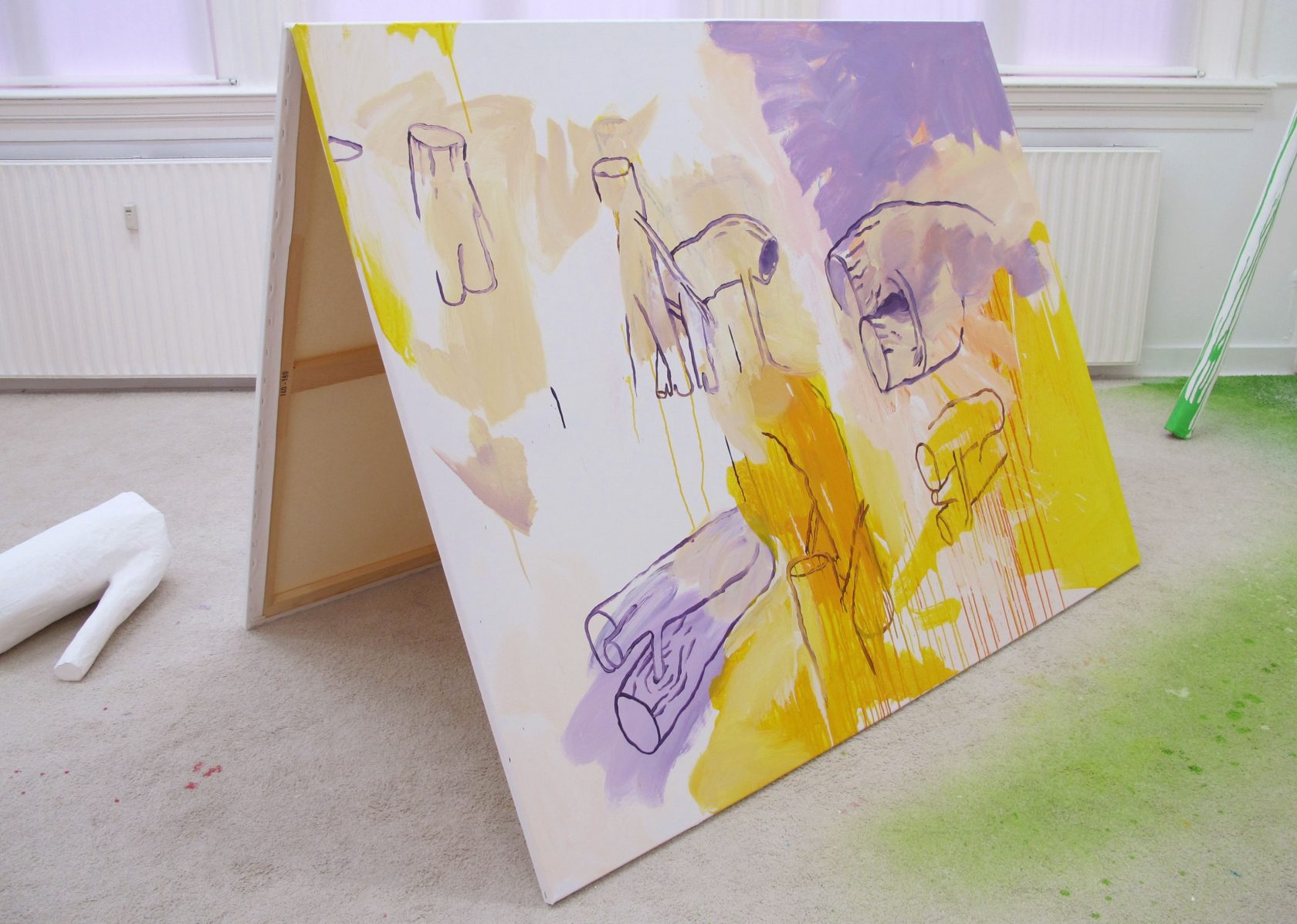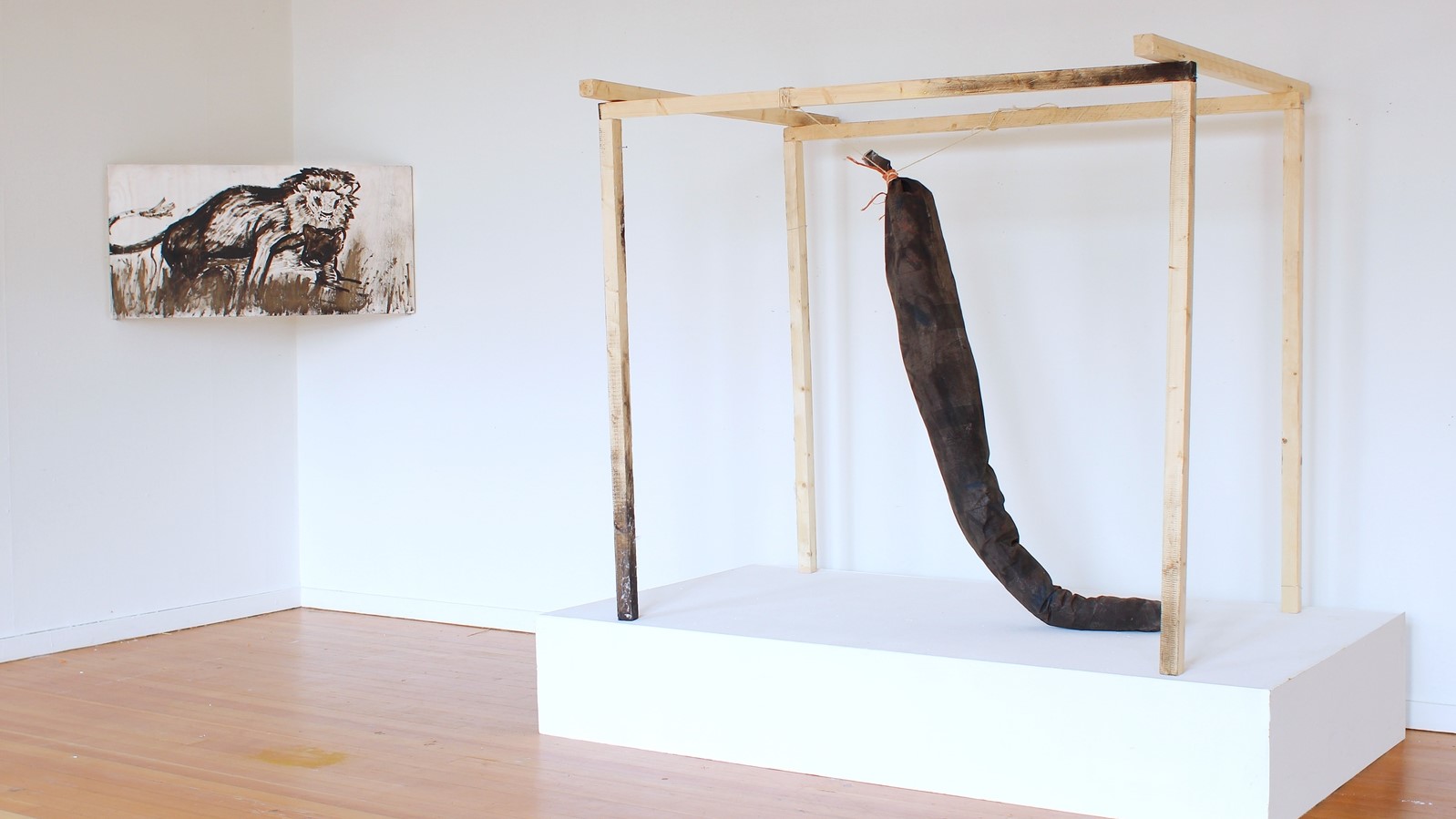Awkward Memories – Frank Mohr-graduates Bart Nijstad and Michal Kruger
AS PER USUAL, I meet Bart and Michal, recent Frank Mohr Institute graduates, on a Zoom-meeting. I sit in my bed, with a laptop on my lap, and Bart and Michal are properly seated behind their tables. To prepare myself, have well-read their theses, and I have selected a neat line of questions and citations to confront my interviewees with. We start the interview, get lost in the conversation , and about two hours later, we end up with a large .txt file that covers all of what’s been said. I can’t wait to turn it into a full article, but I also know that I should give my notes some space, so they can ripen. So I wait for a while before continuing.
The next time I open my computer, I discover that the file, which previously contained a lot of interesting quotations, now merely consists of a collection of blank spaces. All is gone! I google for several hours and use various recovery tools. I even try re-encoding the thing, but none of this works. And worse, due to technological issues, I didn’t make a recording of the conversation. I have to change my strategy. It seems I have to write… from memory. Here we go…

In both of your practices, I tell Bart and Michal, you often work with the idea of memory. That it is (at least partially) constructed. It raises the question: who decides our memories? And how do they do it? I remember, Bart, that in your thesis, you address this memory of staring out of the window as a young child, and thinking: this will be my first memory. So there seems to be this kind of narrative between these two selves that you address, right? The “temporal self”, which is here, and now, in the present, and the “timeless self”, which is an image of the past or future.
“No”, says Bart. “This is actually my real memory! I can vividly remember it. Of course, in my head I change it, because it keeps evolving inside of there. The memories, they keep being redrawn.”
Later he adds, that yes, he would agree now. “There is a dialogue going on between the temporal self and the timeless self. The only difference is that I believe that parts of the past self aren’t redrawn in such a way that they become something new. In their essence they stay the same.”
When recounting all of this, I feel like a puppeteer putting words in his mouth. In the comment section of the Google Docs-file I’m editing, he adds extensive notes, where information misses- placing memories, fictions and anecdotes.
Once upon a time there was a tree deep in the jungle that had a large hole in its trunk, located far above the ground. Not far away was another tree that had a thick branch growing at the same height as that hole, pointing towards the hole. In the same part of the forest were a man and a woman who lived alone and had no knowledge of reproduction or sex. During a violent storm, the man and woman watched the two trees sway in the wind. Finally, both trees were blown together, and the branch entered the hole. The strong wind made the branch go in and out of that hole for a long time. This gave the man an idea. The man and the woman imitated the trees, and their children were the beginning of the Penan-people.

I ask Michal how this constructed memory takes place in his practice. His work mostly seems to focus on disseminating the colonial narrative in South Africa, from a position of the ‘Aware White Afrikaner Male Artist’. I am reminded of Sun Ra, for whom the colonial history writing was “strange territory”: the ancient world, he was learning was less a place than a myth. White people who made claims on it for themselves often did so in the same terms as black people. And though they wrapped their self serving myths in science and scholarship and made ‘race’ do their bidding, when Sonny looked closely it seemed nothing more than testifying, as in church. I ask Michal how he relates to these kinds of history fiction. He tells me that the (hi)stories he heard while growing up, and while being in school, were often far from the truth. He calls the memories, or the general process of producing history, a fictional recounting of sorts. He adds: “Although I think it’s important to also state that “fictional recounting” does not allude to the real life consequences this construction has. As with all fiction, it is deliberately, if not delicately, put together. Each element and reference has an agenda and each new utterance of history is layered through this mesh. Perhaps it is not even fiction, for we can all agree that fiction is untrue, but when it becomes something that is believable and transferrable it is dangerous. Stories are fiction and are all non-fiction, it is the play between these two that make them useful.”
Nijstad: “As a child I was sent to a spiritual healer. This event had a great impact on me. I had to sit down in a room filled with couches. On each couch a person was sitting. Everyone on the couch was holding a little wooden box. On the box was a pendulum. The people were rotating this pendulum and with each rotation a sound was produced. As a small boy I also had to sit on one of the couches and rotate the pendulum on a box. I think my fascination for magic (the world that can’t be caught in words) started here.”

“I like to tell stories, so I create a setting where there is a story. A story always needs a setting. These are often a little bit absurd. I take very normal elements, a tree, rope or a barrel, and place them in a different context, to make a different landscape.” It reminds me of what he wrote in his publication, link between worlds, about the work he made with his collective elektriciteit is onze hobby, at Performing Arts Festival Noorderzon. When talking about this (performative installation), he described his audience as being contemplative: out of place. He tells me that the objects themselves are not contemplating themselves, but can be an instigator for contemplation. I think back to my visit at Research Gallery (NP3), where in his duo-show with Eirik Jahnsen, it did feel like that. The sculpture/drawings, depicting tree-like figures engaging in non-tree activities, seemed like they “shouldn’t exist”. Inside the white space, this allows for a view that is out-of-context. The contemplation that follows out of this could (or should?) lead to an insight. The insight did not arrive yet, but I feel that my mental waters are bubbling.”
I ask Michal a question.
J.M. Coetzee, who you also mention in your thesis, writes in White Writing about two themes, being the great intellectual schemas, through which South Africa has been thought by Europe; and with the land itself, South Africa as landscape and landed property. Both of these themes also seem to reflect in your work. How much of this “landscape” is something that has been thought by Europe?
He says that he indeed uses this idea of “thinking the landscape”. It is a lot about making this landscape visible, about this very poetic act of rendering it, as happening in the colonial imagination, as a soft and permeable place (citation needed). When I mention that I read that landscape poetry is one of the most prevalent forms in South Africa, he is not surprised. “This poetic view of the afrikaans landscape”, he tells me, “has often been seen as a permission for the boere to conquer the land. It is beautiful, so we can use it.” He adds: “It is also worth noting that the “beauty” of the land is in itself a construction which fuels the colonial desires of Afrikaner heritage. A history must be constructed that situates our people in the land and claim the land as theirs. This is often done by valorizing the empty, unpeopled, landscape which was tamed by famers. Furthermore, safari game parks become equally constructed spaces of natural land. The afrikaner is one who not only appreciates nature for prosperity but also for protection. Strangely these narratives are at odds with each other but they have a common enemy of the other. In this case black South Africans whose place within these spaces of both farm and safari are largely limited and unwelcome.”
